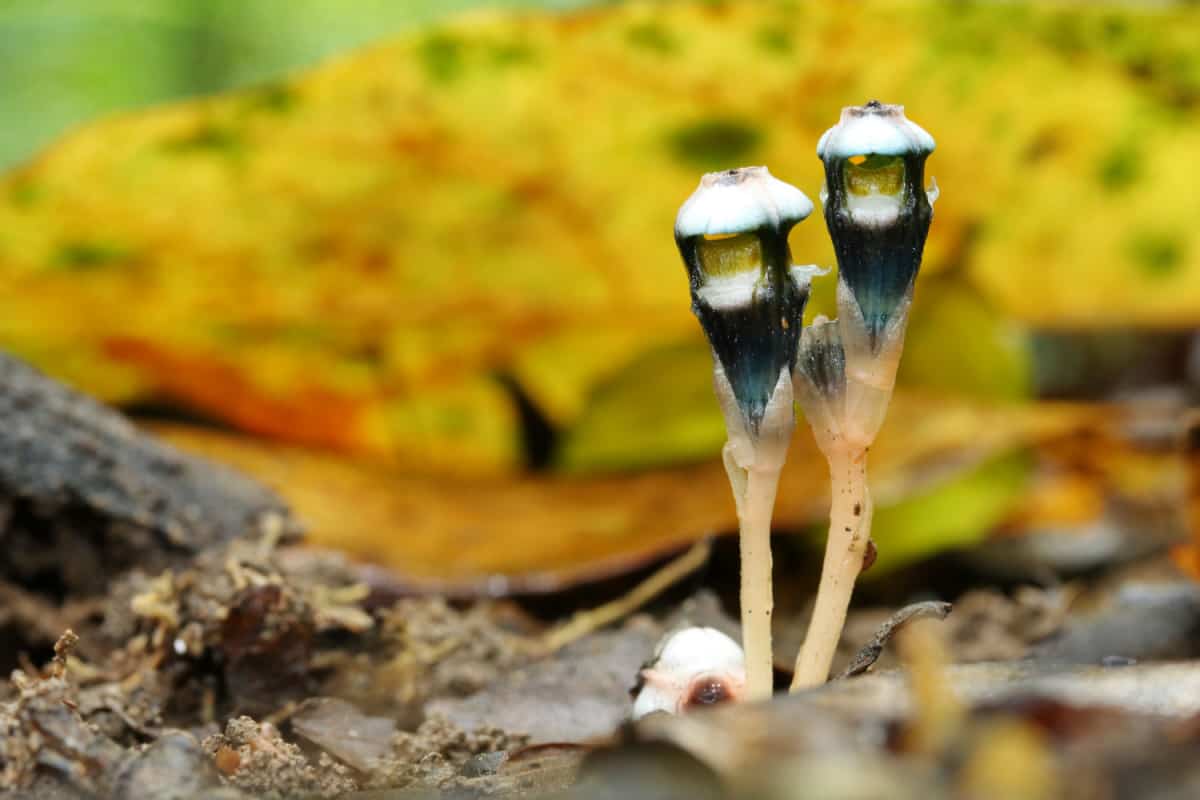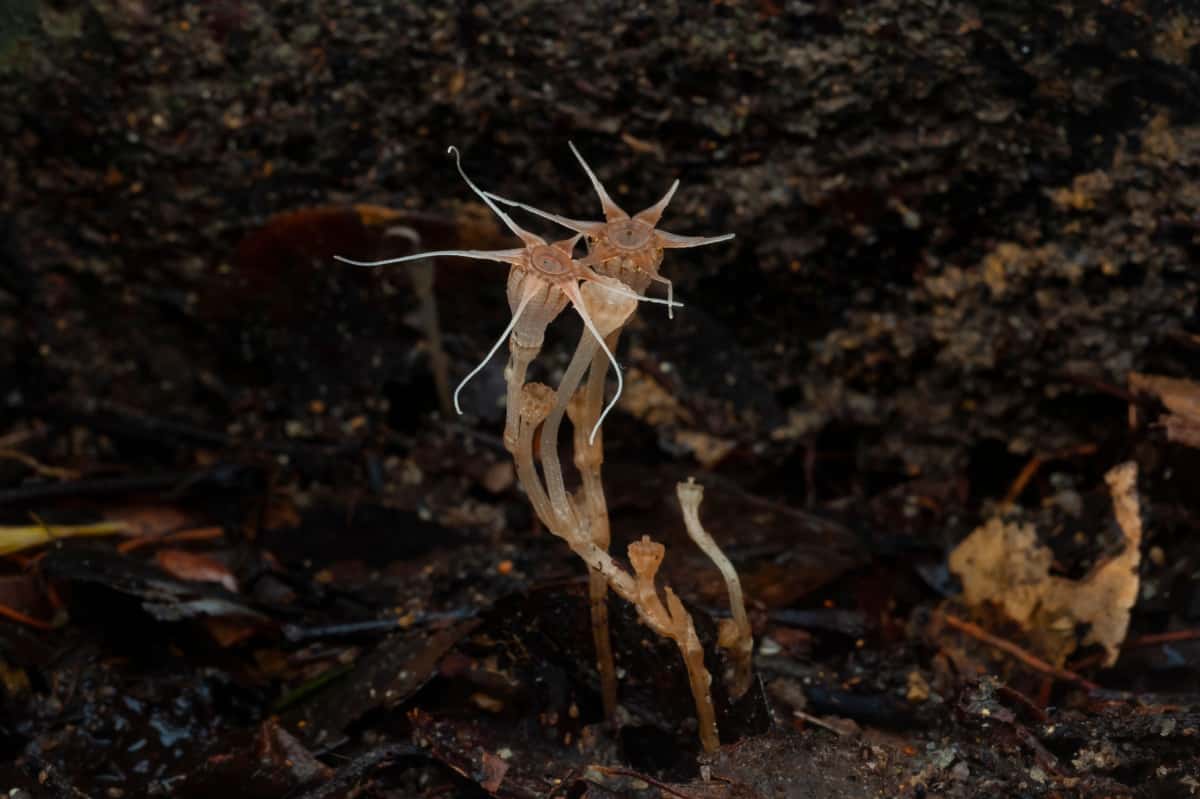In a forest in Japan, scientists have rediscovered an extremely rare species of parasitic "fairy lantern" plant that was presumed to be extinct. The mysterious plant, Thismia kobensis, belongs to a rarely seen fungus-sapping genus.

These plants grow underground without photosynthesis, yet they send translucent flowers to sprout like ghostly lanterns from the forest floor.
Think of this as a flower that makes light without needing any.
@jacobsimonsays The most amazing plant I’ve ever seen was thought to be extinct for 30+ years, but it was just rediscovered! Stories like these remind us that there is always hope. #fairylantern #thismiakobensis #kenjisurtsugu #climativity #climatehope ♬ A Moment Apart - ODESZA
These mysterious fairy lantern flowers have a fascinating history.

First documented in 1992 in Kobe, Japan, the plant was presumed extinct when its habitat was destroyed by building an industrial complex.
Because developers didn't know how unique these flowers were then, they likely bulldozed over them to make way for the structure.
Now, three decades later, on a forest trail about 19 miles (30 kilometers) from Kobe, scientists have found the waxy, fang-shaped petals of the rare plant once more.
This discovery is remarkable for botanists trying to learn more about these rare and elusive plants.
Fairy lanterns, also known as Thismia, are subterranean plants whose only brief eruptions from the earth come in the form of intricately petaled flowers.
These plants do not have chlorophyll to photosynthesize energy, so they use a process called mycoheterotrophy to steal the nutrients from the fungi that entwine themselves around their roots.
This makes them unique and challenging to study, requiring specific conditions to grow and thrive. Because these flowers are small and often blend into the surrounding ecosystem during the day, it can be hard to catch them.
However, at night is when fairy lanterns truly come alive.

Where you might be able to find fairy lantern flowers...
Thismia's preferred habitats, which tend to be tropical rainforests, are facing global decline. With constant threats to the world's rainforests, we could lose unique plant species like the fairy lantern.
Little is known about the elusive plants, and a significant number of the roughly 90 identified species have been lost, some for decades after their initial discoveries.
This makes the rediscovery of T. kobensis even more critical, as it is the northernmost known Asian fairy lantern species.
After studying the otherworldly plant, the scientists found that its features, such as its distinct petals and lack of nectar glands, make it closely related to the only North American fairy lantern, Thismia americana.
Here's a video of botanists trying to find Thismia americana back in 2014:
The connection between plant species in Eastern Asia and North America having close relationships and disjunct distributions across these regions is not uncommon.
It can often be attributed to migration through the Beringia land bridge. It's not uncommon for plants to move through continents without anyone realizing it.
Without this, we're not sure we'd have the gorgeous flowers in our gardens we do to this day.
Fairy lanterns were likely able to spread globally through trading/migration.
The rediscovery of T. kobensis is exciting for botanists and offers hope for the American version of the fairy lantern.
The Field Museum in Chicago has created a guide to help plant hunters spot the long-missing Thismia americana. Botanists hope it might still be out there somewhere. The rediscovery of its counterpart in Japan is a reason for hope.
The study suggests possible conservation measures, such as protections for the forest or botanic gardens attempting to propagate the plant.
The researchers are also conducting further surveys to determine if there are more specimens of Thismia kobensis in the area.
However, there are concerns that foot traffic could disturb the rare plant, so it is crucial to take steps to protect it and its habitat.
If we can locate this flower's American version, that would be a groundbreaking rediscovery. The Japanese variety persevered through all these years, so who's to say the American version didn't as well?
Rediscovering Thismia kobensis in Japan is a significant milestone in studying fairy lanterns. This rare and elusive plant, which grows underground and lacks chlorophyll, has been difficult to study due to its specific growth requirements.
However, the discovery of T. kobensis offers hope for the American version of the fairy lantern and provides botanists with new insights into the evolutionary history of these remarkable plants.
We must take steps to protect T. kobensis and its habitat to ensure it does not become extinct again.
Without enough people searching and preserving this notable species, we're afraid it could truly be gone again forever. Who doesn't want to grow a magical fairy lantern in their backyard? Come on, people!
Have you heard of this plant species? Would you try and grow one in your garden?
Leave us a comment below!
